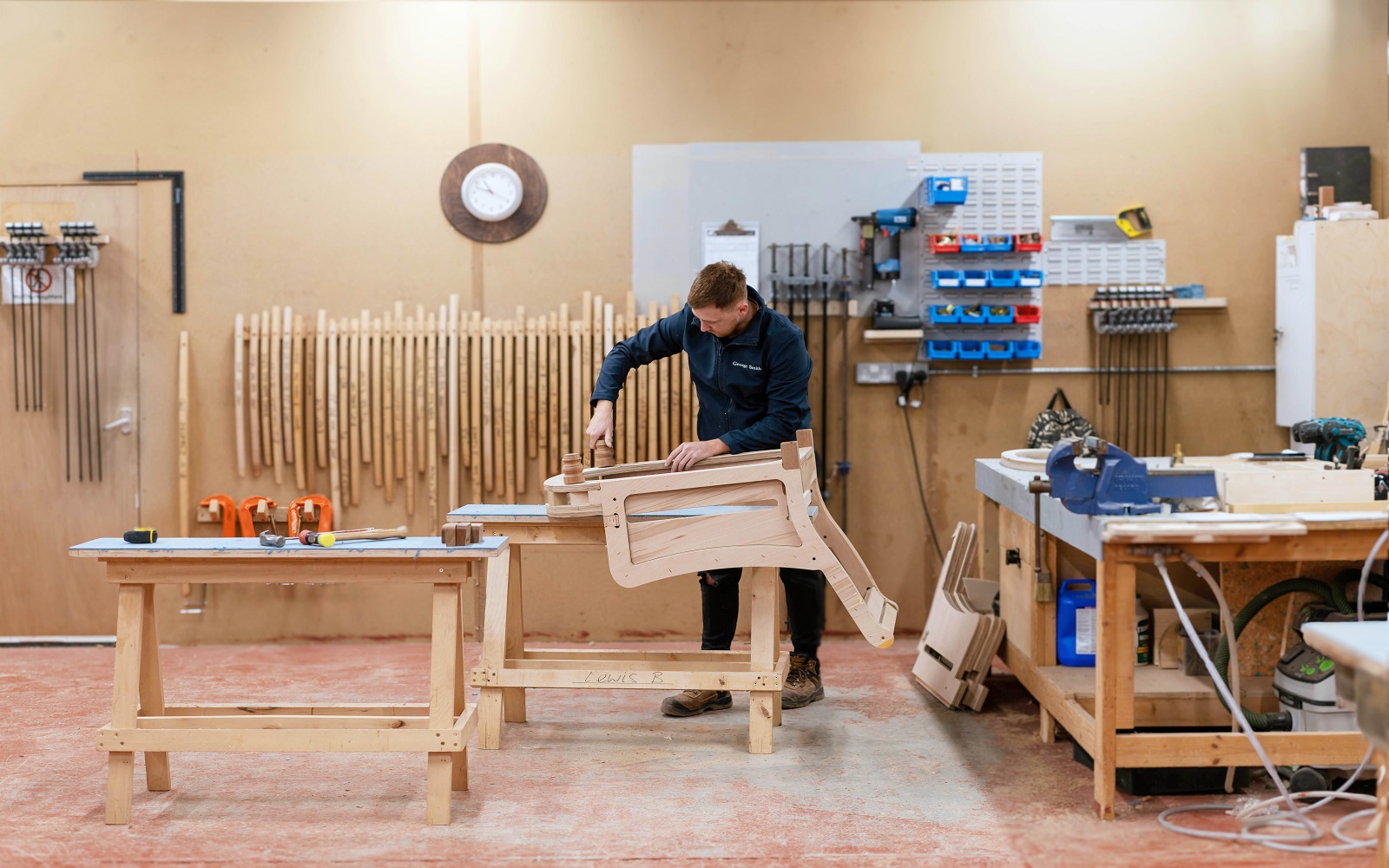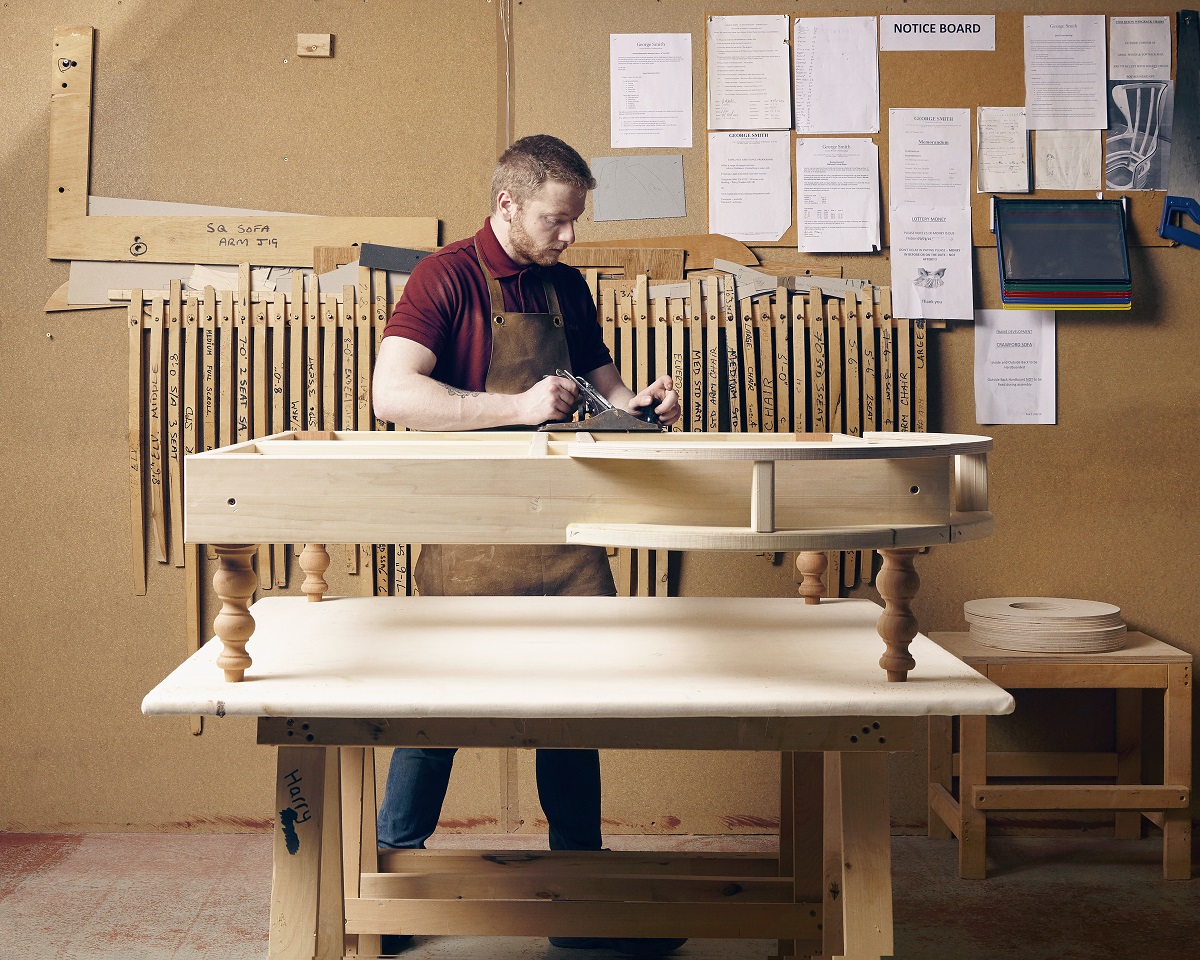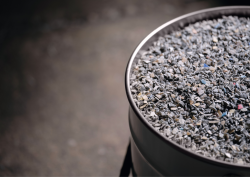Sustainability and craftsmanship is at the heart of the George Smith design ethos, using natural materials to manufacture upholstered furniture at its factory in Northumberland that is built to last…

Timber is at the heart of George Smith furniture and all the frames carry a 25-year guarantee. It is the inner strength and structure of the furniture, and, for some designs, the beautiful finishing details that help set it apart. At George Smith, only hardwoods are used in its furniture; sustainably sourced timbers that it procures from accredited suppliers. With a design philosophy that includes restoring and replenishing materials where needed on its furniture to keep it looking as good as new, we take a look at the various types of timber used in its factory and the reasons behind it.

Image credit: George Smith
One example of the wood used is the American tulipwood, also known as yellow poplar. This timber is used in the George Smith workshop for the internal make-up of pieces, typically in places that can’t be seen, as its light cream colour with streaks of grey or green makes it hard to colour match when it comes to staining. This tulipwood comes from the Appalachian Mountains in North America, where forests are growing at a rate of 2.45 for every 1 tree that is harvested or dies combined. Tulipwood grows at twice the rate of an oak tree, and grows straight up with minimal low branches, resulting in less waste and enabling the George Smith designers to make more furniture per board.
All the timber used is kiln-dried, and the benefit is that a 4.5” tulipwood board will take about 4 to 5 days to dry, as opposed to 3 to 4 weeks for a red oak board of the same size.
For the external wood of the furniture, either ash or utile is used, depending on the desired finish. Due to its similarity to oak in strength and grain, a mixture of European and American ash is used for the oak finishes. A hardwood tree in the olive tree family, ash dries three times faster than oak. Whilst oak has been used in some George Smith designs, and can be done on request, it is recommended against, as it can be prone to splitting.
Utile is the brand choice for mahogany and walnut finishes. The key difference between classic mahogany and walnut woods is the colour – mahogany has a reddish-brown hue whereas walnut is a deeper brown with a purplish hue or undertone. Both can be replicated with various finishes on utile wood as it has a similar grain.
Using the UK’s leading independent hardwood specialist importer, with over 200 years of experience in the industry, every single piece of wood that passes through can be fully traced back to its source and has to pass strict due-diligence to be compliant with the United Kingdom Timber Regulations (UKTR) – where it grew, when it was felled, and which mill it came from. The supplier is committed to controlling the supplies of their North American & European hardwoods to exclude wood harvested from forest areas where traditional or civil rights are violated, from uncertified forest areas with high conservation values, from genetically modified trees, from forest areas which have been illegally harvested, and from natural forests cleared for plantation or other use.
Outdoor pieces are made with iroko; it is an inherently oily timber and suited to exposure to moisture, as well as durable and resistant to both rot and insect attack. Whilst teak is a popular choice for outdoor furniture, George Smith believes Iroko is a superior sustainable species due the extremely large size of the Iroko tree, which produces wide and long boards that are easier to use for millwork applications and produce less waste.
George Smith is one of our Recommended Suppliers and regularly features in our Supplier News section of the website. If you are interested in becoming one of our Recommended Suppliers, please email Katy Phillips.
Main image credit: George Smith






















